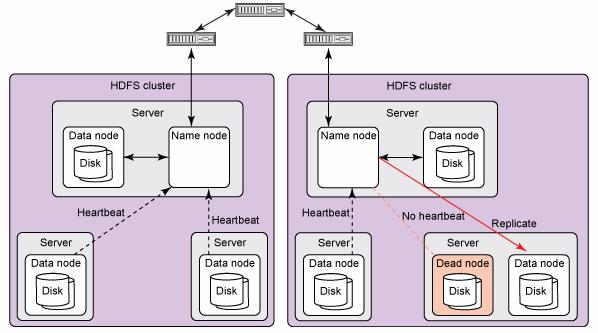Several things can cause loss of connectivity between name and data nodes. Therefore, each data node sends periodic heartbeat messages to its name node, so the latter can detect loss of connectivity if it stops receiving them. The name node marks as dead data nodes not responding to heartbeats and refrains from sending further requests to them. Data stored on a dead node is no longer available to an HDFS client from that node, which is effectively removed from the system. If the death of a node causes the replication factor of data blocks to drop below their minimum value, the name node initiates additional replication to bring the replication factor back to a normalized state.

To process the data, Job Tracker assigns certain tasks to the Task Tracker. Let us think that, while the processing is going on one DataNode in the cluster is down. Now, NameNode should know that the certain DataNode is down , otherwise it cannot continue processing by using replicas. To make NameNode aware of the status(active / inactive) of DataNodes, each DataNode sends a “Heart Beat Signal” for every 10 minutes(Default). This mechanism is called as HEART BEAT MECHANISM.
Based on this Heart Beat Signal Job Tracker assigns tasks to the Tasks Trackers which are active. If any task tracker is not able to send the signal in the span of 10 mins, Job Tracker treats it as inactive, and checks for the ideal one to assign the task. If there are no ideal Task Trackers, Job Tracker should wait until any Task Tracker becomes ideal.

